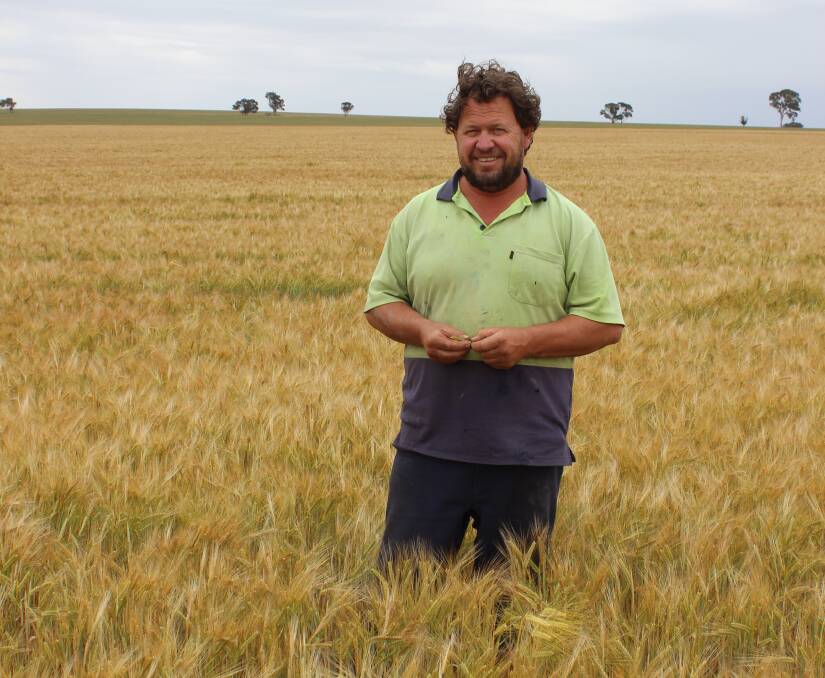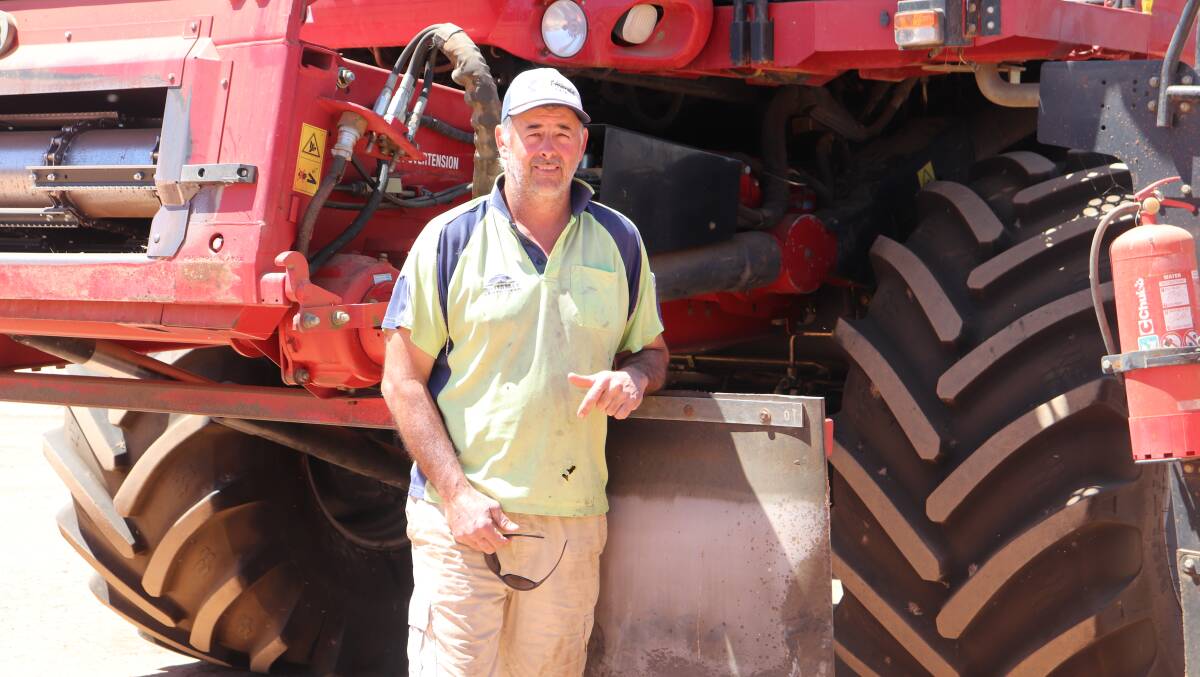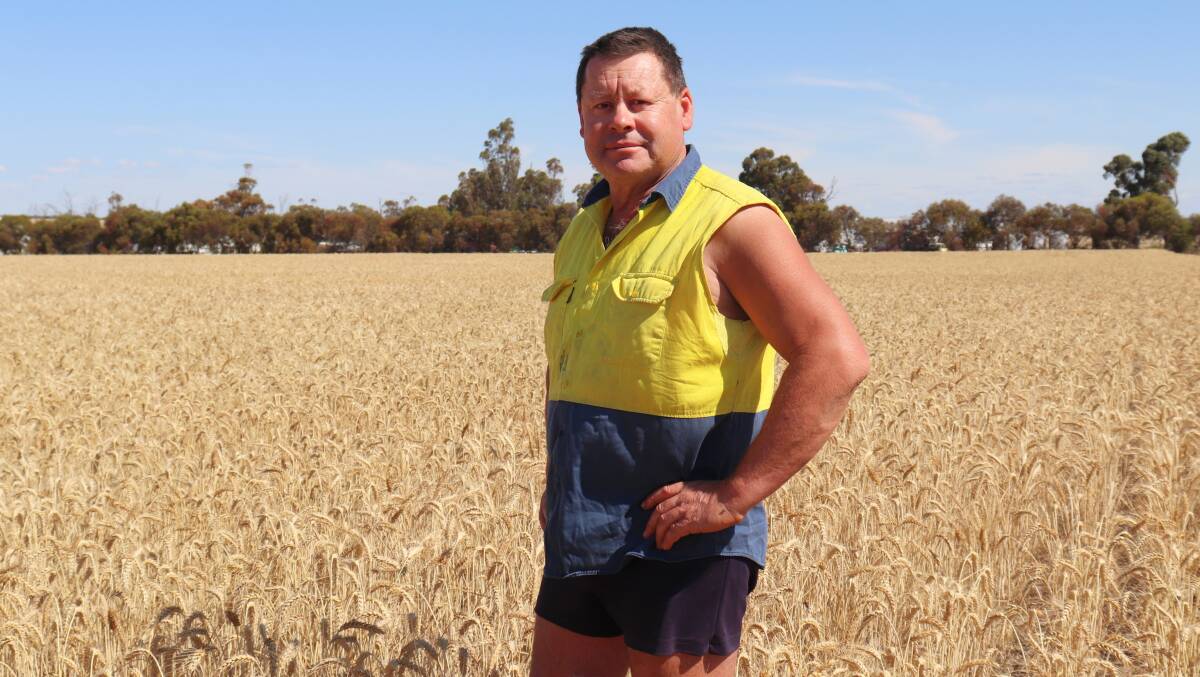WITH the 2020 growing season behind them, WA farmers are now reviewing their programs and considering what they will be seeding this season.
Subscribe now for unlimited access to all our agricultural news
across the nation
or signup to continue reading
As everyone looks forward to hopefully a better 2021, Farm Weekly caught up with a few farmers we visited last season, to see how things wrapped up.
STEVEN BOLT - CORRIGIN

CORRIGIN sheep and cropping farmer Steven Bolt said considering the growing season rainfall on farm the harvest yields for 2020 weren't that bad.
"We had between 129 millimetres and 165mm growing season rainfall," Mr Bolt said.
"We're quite happy with the yields considering, particularly with barley."
Mr Bolt, pictured above in 2018 when the crops looked better, said this season's barley crop was close to average at 2.4 tonne per hectare, while the wheat crop was down to 1.6t/ha.
"We were still quite happy with the quality of the cereals though," he said.
"The lupins were a disappointment but that was fairly common in the area, due to the lack of rain."
Mr Bolt said 2020 was the worst rainfall year since 2010 and as bad as 2002.
"This season the crops were better than we got in those years due to better technique," he said.
Despite the better than expected harvest, like many other farmers in the region, Mr Bolt was still concerned about the lack of rain and the impact that might have in coming months if there's no summer rains.
CLINT DELLA BOSCA - BURAKIN

THE better than expected WA harvest turned out to be almost an average harvest for Burakin cropper Clint Della Bosca.
While "wheat turned out to be where we thought it would be, barley, oats and lupins were all good," Mr Della Bosca said.
"It wasn't bad and we can't complain.
"Looking back at the finish there was just not enough rain.
"In saying that we managed a 1.3 tonne (per hectare) average yield.
"That's not far off the 1.4t/ha average of what we budget on."
Mr Della Bosca said it was the lack of rain at the right times that impacted the most.
With just 15-20 millimetres in September, a dry October and 40mm in November, it was better than earlier predictions but not quite enough.
He said he was "hoping for some summer rain" at the end of February and March - "the later the better".
Seeding is expected to start again in early April so that Mr Della Bosca can "manage the dry finish".
NEVILLE 'SPUD' TURNER

WITH only 180 millimetres of growing season rainfall for the year, Corrigin grower Neville 'Spud' Turner was astounded at how well the crops did.
While the majority did go slightly below the 10-year average, it was still an extraordinary result for the rain that was received.
Mr Turner started harvest about mid-November and finished about December 18 and while the process might take longer if the crops were better, a month is pretty standard timing for him.
"We ended up getting about 1.8 tonnes per hectare on our wheat, 2.5t/ha on barley, canola was only 0.7t/ha as it got a bit frosted and we haven't got the tonnages in for lupins yet but they did quite well," Mr Turner said.
"For a season with only 180mm of growing season rainfall it was a pretty good result and we realise that we could get that sort of rainfall along with two frosts and two hot days and halve our yields, so it definitely could have been worse."
While he's glad that the 2020 season turned out alright, Mr Turner is wary that the same won't always be the case.
"We've managed to get pretty good yields on the rainfall we've had for the last couple of years, but we can't keep living on that amount of rainfall," he said.
"It'll wear pretty thin if we don't get more, because we won't keep getting the same yields with that rainfall, especially if it falls at a different time of year."

